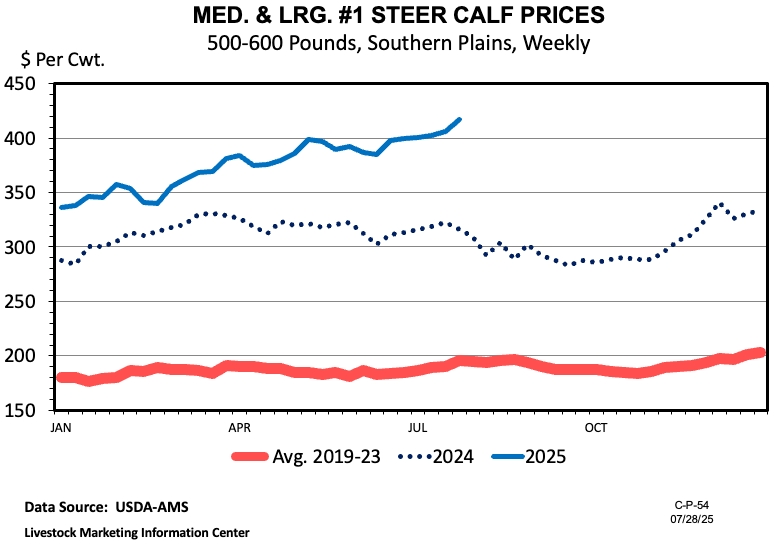By James Mitchell
Two key reports were released on Friday that provide new insights into cattle herd dynamics and feedlot inventories. USDA-NASS published the mid-year Cattle Inventory report and the monthly Cattle on Feed report. Notably, we did not have a July Cattle Inventory report last year, as it was one of several reports USDA-NASS suspended due to budget constraints. Fortunately, the report was brought back this year. As such, comparisons in this article will reference data from July 2023.

The report estimates July 2025 cattle inventories at 94.2 million head, down 1.3% (or 1.2 million head) from July 2023. The total number of cows and heifers that have calved was 38.1 million head, a 0.8% decline from the July 2023 total of 38.4 million. Beef cows totaled 28.7 million head on July 1, 2025, down 1.2% compared to two years ago. Note, as with the January Cattle Inventory report, USDA can revise prior-year estimates in the July report. In this case, USDA revised the July 2023 beef cow inventory downward by 1.2 million head, which reduces the apparent decline in beef cow numbers from two years ago.
Source : osu.edu